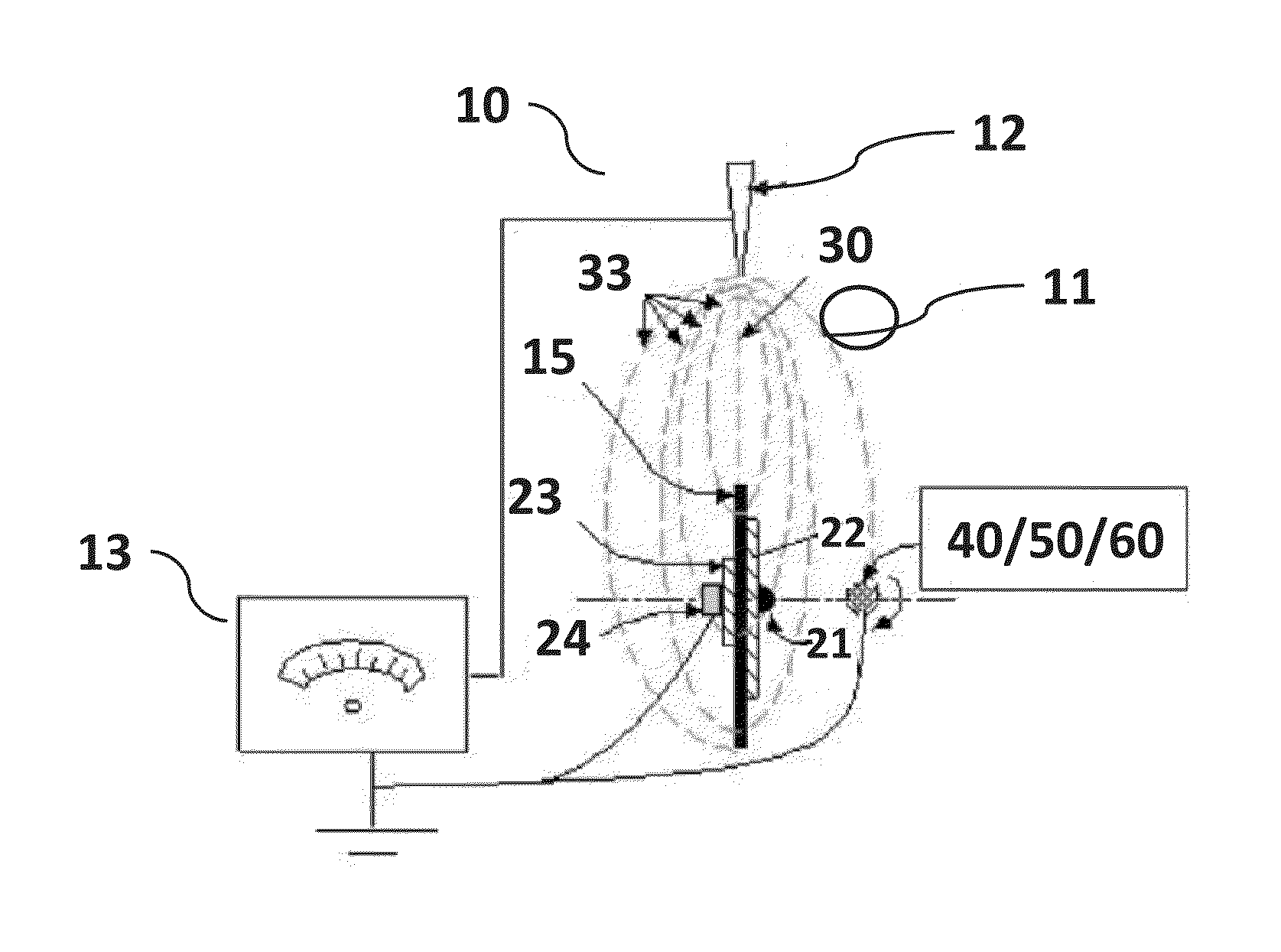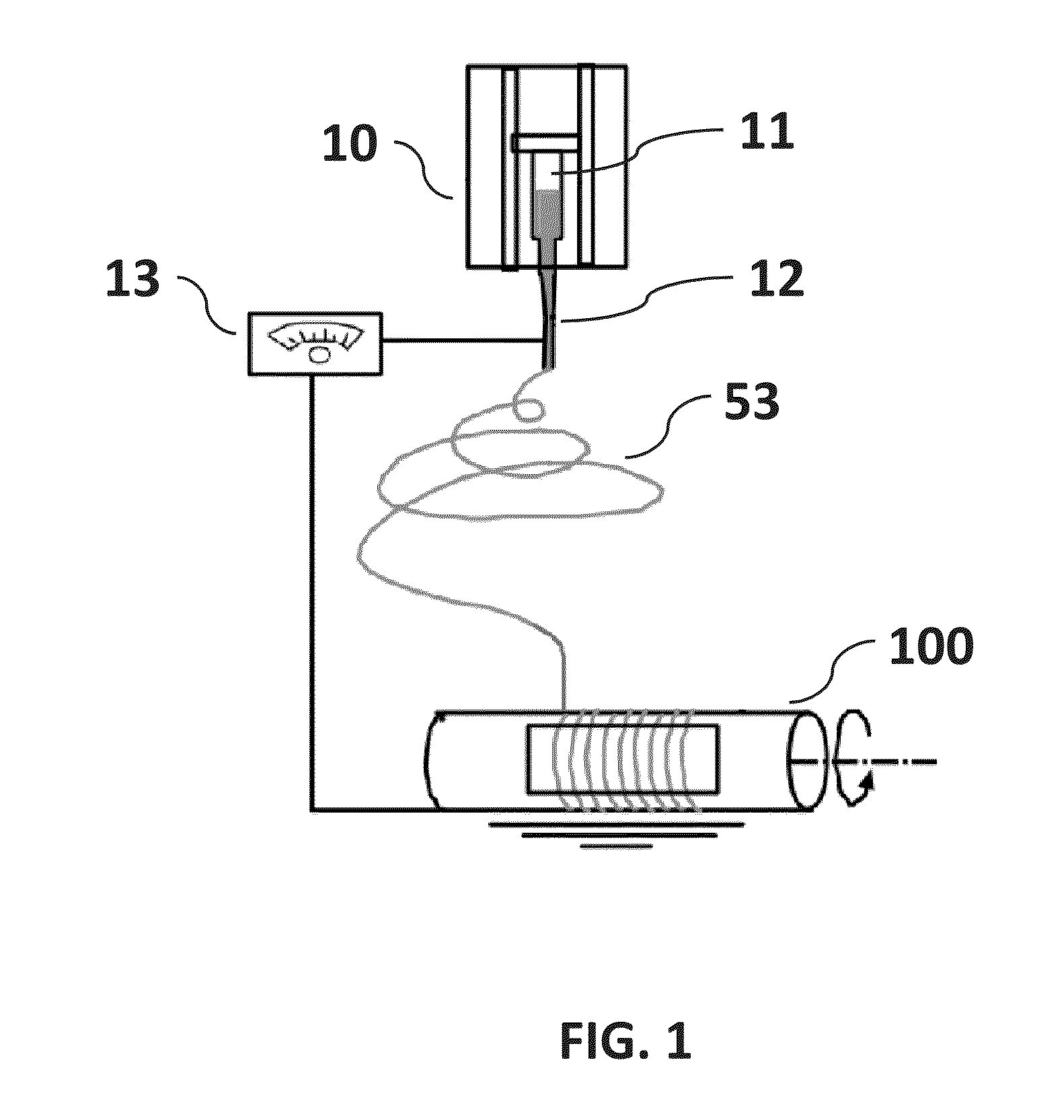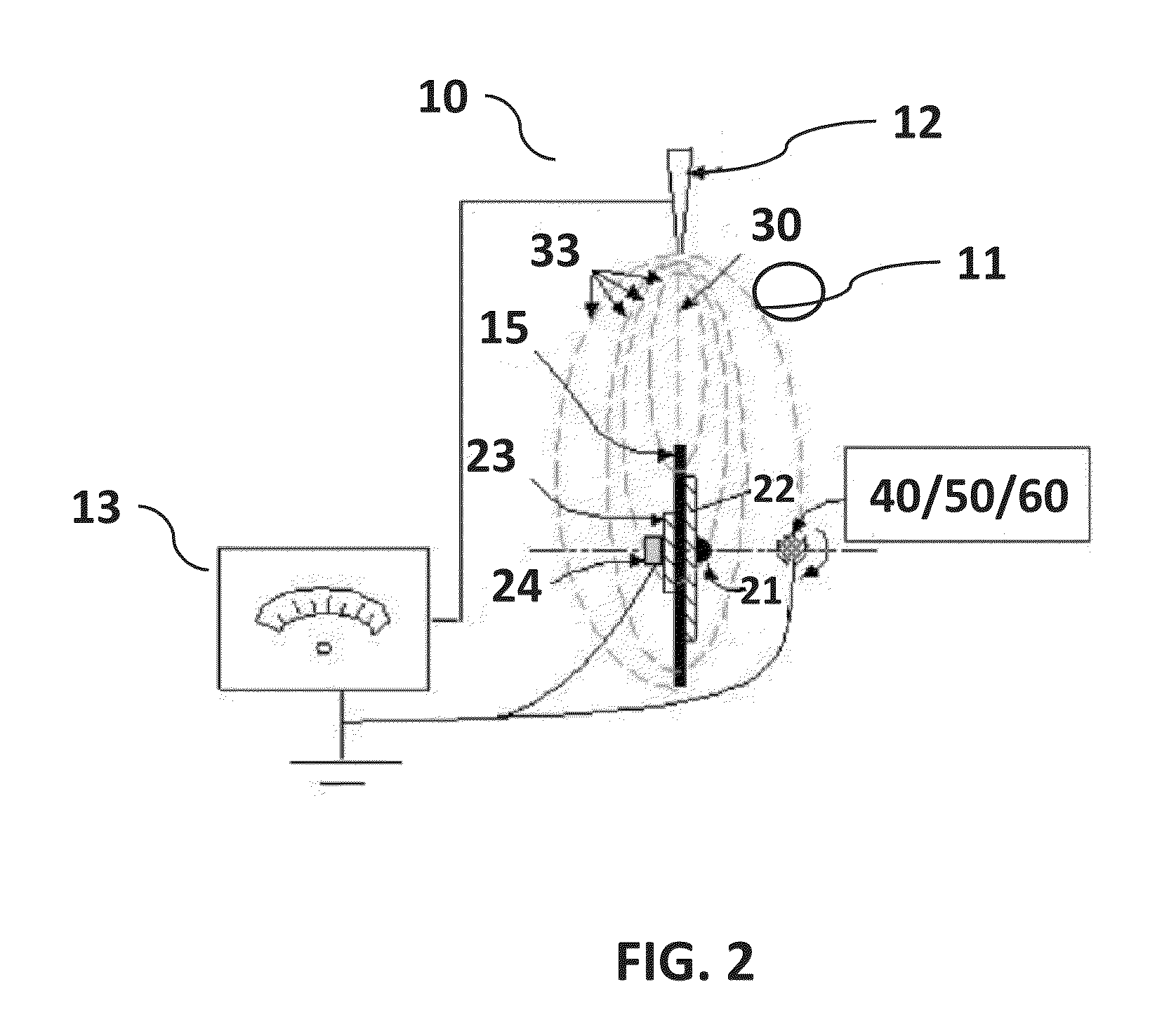Method and apparatus for controlled alignment and deposition of branched electrospun fiber
a technology of electrospun fiber and branched fiber, which is applied in the direction of filament/thread forming, other domestic articles, coatings, etc., can solve the problems of jet branching and/or splitting, non-uniform deposition of fibers on the substrate, and further elongation of the jet, so as to avoid disturbance of the fiber flow, improve the arrangement of aligned cells, and quickly collect parallel fibers
- Summary
- Abstract
- Description
- Claims
- Application Information
AI Technical Summary
Benefits of technology
Problems solved by technology
Method used
Image
Examples
Embodiment Construction
[0030]In brief:
[0031]FIG. 1 is a non-limiting diagram schematically illustrating the method of the typical electrospin process. A typical electrospin setup consists of syringe pump, syringe with a needle, high-voltage power supply, and collector. Presently a single rotating or flat target disk, a pair of charged collector strips have been used as the fiber collector.
[0032]FIG. 2 is a non-limiting diagram schematically illustrating the method of the present invention. The embodiment shown in the diagram uses the path of the electromagnetic field generated by the potential difference between charged needle and rotating auxiliary metallic disk using a high-power voltage source to capture, deposit and align fiber on a substrate. The apparatus shown includes the syringe needle, DC motor, blunt bolt, and front insulating washer. A linear stage is used to move the collector back and forth.
[0033]FIG. 3 is a non-limiting diagram illustrating the components of the apparatus of the present inv...
PUM
| Property | Measurement | Unit |
|---|---|---|
| diameter×1 | aaaaa | aaaaa |
| strain rate | aaaaa | aaaaa |
| electromagnetic field | aaaaa | aaaaa |
Abstract
Description
Claims
Application Information
 Login to View More
Login to View More - R&D
- Intellectual Property
- Life Sciences
- Materials
- Tech Scout
- Unparalleled Data Quality
- Higher Quality Content
- 60% Fewer Hallucinations
Browse by: Latest US Patents, China's latest patents, Technical Efficacy Thesaurus, Application Domain, Technology Topic, Popular Technical Reports.
© 2025 PatSnap. All rights reserved.Legal|Privacy policy|Modern Slavery Act Transparency Statement|Sitemap|About US| Contact US: help@patsnap.com



